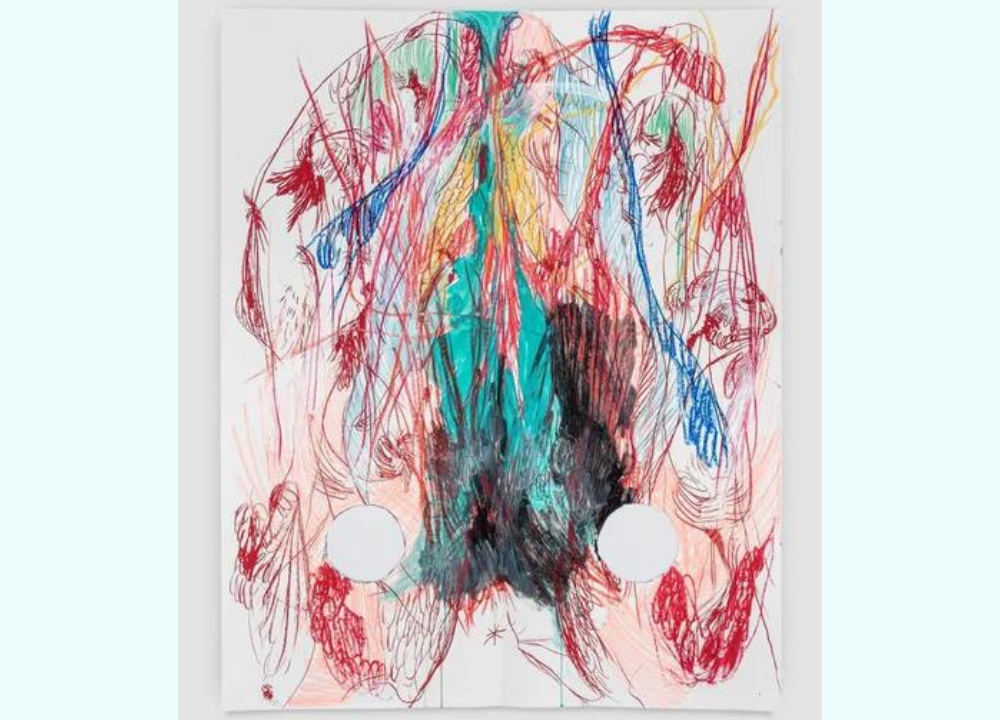Art made by kids is more than just colorful drawings. It plays a big role in their growth and development.
Creative expression through art helps children share their feelings and thoughts. It gives them a voice when words may be hard to find. Each piece tells a story, reflecting their unique view of the world. Art encourages imagination and problem-solving skills.
It also builds confidence as they see their ideas come to life. Parents and teachers should value this art. It provides insights into a child’s mind and emotions. Understanding why kids’ artwork matters can help adults support their creative journey. This blog will explore the importance of children’s art and how it impacts their lives and learning.
Importance Of Art In Childhood
Creative expression is a vital part of childhood. Art allows kids to explore their thoughts and feelings. It gives them a way to communicate. Through colors, shapes, and textures, children express their unique views of the world. The importance of art in childhood cannot be overstated. It supports growth in many areas, including cognitive skills and emotional health.
Cognitive Development
Cognitive development is how children think and learn. Art plays a big role in this process. Engaging in artistic activities helps kids improve their thinking skills. Here are some ways art supports cognitive development:
- Problem-Solving: Creating art teaches children to solve problems. They decide what colors to use or how to fix mistakes.
- Critical Thinking: Art encourages kids to think critically. They learn to analyze their work and make choices.
- Fine Motor Skills: Drawing and painting improve hand-eye coordination. These activities strengthen small muscles in hands and fingers.
- Spatial Awareness: Working with different shapes helps children understand space. They learn how objects relate to each other.
The table below shows the benefits of art on cognitive skills:
| Art Activity | Cognitive Benefit |
|---|---|
| Drawing | Improves fine motor skills |
| Painting | Enhances problem-solving |
| Collage Making | Boosts critical thinking |
| Clay Modeling | Develops spatial awareness |
Overall, art helps children think better and learn faster.
Emotional Growth
Art is not just about thinking. It also helps with emotional growth. Children use art to express feelings they may not have words for. Here are some important emotional benefits:
- Self-Expression: Art gives children a voice. They can show their feelings through colors and shapes.
- Confidence: Completing an art project builds self-esteem. Children feel proud of their creations.
- Stress Relief: Creating art can calm anxious minds. It provides a safe space to relax and unwind.
- Understanding Emotions: Kids learn to identify and manage feelings through art. They see their emotions visually.
Consider these points about art and emotional growth:
| Art Activity | Emotional Benefit |
|---|---|
| Painting | Encourages self-expression |
| Drawing | Builds confidence |
| Sculpting | Provides stress relief |
| Crafting | Helps understand emotions |
In short, art fosters emotional well-being in children.
Forms Of Creative Expression
Creative expression is vital for children. It helps them share feelings and ideas. Through art, kids learn to communicate. They explore their world and develop their imaginations. Different forms of creative expression bring out their unique voices. Drawing, painting, music, and dance are key ways kids express themselves. Each form offers benefits that contribute to their growth.
Drawing And Painting
Drawing and painting are two of the most common forms of creative expression for children. They allow kids to use colors and shapes to tell stories. This art helps children express feelings they may not have words for. It encourages imagination and creativity. Below are some key benefits of drawing and painting:
- Enhances fine motor skills: Holding brushes and crayons improves hand-eye coordination.
- Boosts confidence: Completing a piece of art gives a sense of achievement.
- Encourages problem-solving: Kids learn to make choices about colors and shapes.
Many children enjoy drawing and painting. It is a fun way to explore their creativity. Below is a simple table showing popular art supplies for kids:
| Art Supply | Purpose |
|---|---|
| Crayons | Easy to use for young children |
| Watercolors | Great for blending colors |
| Markers | Good for bold lines and details |
| Colored Pencils | Perfect for shading and fine work |
Through drawing and painting, kids can share their thoughts. They can create art that reflects their feelings. This is why these forms of expression matter.
Music And Dance
Music and dance are also powerful forms of creative expression. They allow children to express emotions through sound and movement. Kids use music to connect with others. Dance lets them show feelings without words. Here are some benefits of music and dance:
- Improves social skills: Group activities build teamwork and friendships.
- Enhances physical health: Dancing keeps children active and healthy.
- Boosts emotional health: Music can lift moods and reduce stress.
Many kids love to sing and dance. They often imitate songs and rhythms they hear. Below is a list of common musical instruments for kids:
- Drums
- Tambourines
- Guitars
- Pianos
These instruments help children explore music. They learn about rhythm and melody. Through music and dance, kids can express themselves freely. This is important for their emotional and social development.
Building Confidence
Art made by kids is not just fun. It is a powerful tool for building confidence. When children create art, they express their feelings and thoughts. This act of creation helps them feel proud. Confidence grows when kids see their work valued. Understanding this importance can help parents and educators support creative expression.
Self-expression
Self-expression is key for kids. Through art, they share their inner worlds. Each drawing, painting, or sculpture tells a story. Children learn to communicate feelings and ideas without words. This can be especially important for those who struggle with verbal communication.
Here are some benefits of self-expression through art:
- Increased self-awareness
- Improved emotional regulation
- Enhanced creativity
- Greater problem-solving skills
Art also allows kids to explore their identity. They can experiment with colors, shapes, and materials. This exploration can lead to:
- Understanding personal preferences
- Developing unique styles
- Building a sense of individuality
By creating art, children gain a voice. They become more confident in sharing their views. As they express themselves, they feel more capable. This confidence spills over into other areas of life, like school and friendships. They see that their opinions matter.
Public Sharing
Public sharing of art is crucial for building confidence. When kids display their work, they receive feedback. This feedback can be positive or constructive. Both types are valuable for growth. It teaches them resilience and encourages them to keep creating.
Here are some ways kids can share their art:
- School art shows
- Community exhibitions
- Online platforms
- Family gatherings
Sharing art publicly has many benefits:
| Benefit | Description |
|---|---|
| Validation | Receiving compliments boosts self-esteem. |
| Connection | Sharing fosters connections with others. |
| Encouragement | Positive feedback motivates kids to create more. |
Public sharing helps kids realize their art matters. It shows them their creativity has value. Each time they share, they build confidence. They learn to express themselves freely. This is an important step in their development.
Art And Social Skills
Art made by kids is more than just colorful drawings. It plays a vital role in their social skills. Through art, children learn to express themselves and connect with others. They share ideas and work together, building friendships. Art encourages teamwork and communication. Let’s explore how art impacts collaboration and communication among children.
Collaboration
Collaboration is a key part of social skills. When kids create art together, they learn to share and cooperate. Here are some ways art helps with collaboration:
- Team Projects: Working on a group project teaches kids to listen and value each other’s ideas.
- Sharing Materials: Kids learn to take turns and share supplies like paint and paper.
- Problem Solving: They face challenges together, finding solutions as a team.
- Building Trust: Children develop trust through shared experiences in art.
Engaging in collaborative art activities can yield positive results. A study showed that kids who work together in art projects improve their social skills. Here’s a simple table of benefits:
| Benefit | Description |
|---|---|
| Improved Teamwork | Children learn to work towards a common goal. |
| Enhanced Creativity | Sharing ideas leads to new creative solutions. |
| Conflict Resolution | Kids learn to resolve disagreements constructively. |
Collaboration through art is not just fun; it builds essential social skills. Children who create together often form stronger bonds. They learn to appreciate each other’s talents.
Communication
Art also enhances communication skills. Kids express their feelings and thoughts through their artwork. This form of expression helps them communicate better with others. Here are some ways art boosts communication:
- Visual Language: Art provides a way for kids to share ideas without words.
- Storytelling: Children can tell stories through their drawings, enhancing narrative skills.
- Feedback: They learn to give and receive constructive feedback from peers.
- Emotional Expression: Art helps kids express feelings they may find hard to say.
Communication skills grow as children engage in art activities. A recent survey showed that children involved in art programs reported feeling more confident in expressing themselves. Here’s a summary of communication benefits:
| Benefit | Description |
|---|---|
| Increased Confidence | Kids feel more secure sharing their thoughts. |
| Better Listening Skills | They learn to listen to others’ perspectives. |
| Stronger Vocabulary | Art discussions help expand their language skills. |
Through art, children develop important communication skills. They learn to express ideas clearly and listen to others. This builds a strong foundation for future interactions.
Cultural Awareness Through Art
Creative expression through art is essential for children. It allows them to share their thoughts and feelings. Art made by kids reflects their cultures and experiences. This expression builds cultural awareness. Through their artwork, children communicate their world. They show us diverse views and traditions. This helps us understand and respect one another.
Diverse Perspectives
Children’s art provides a window into their unique perspectives. Each piece tells a story about their culture, environment, and personal experiences. This diversity enriches our understanding of the world. Here are some key points:
- Different backgrounds: Kids from various cultures express themselves differently.
- Emotional expression: Art helps children convey feelings they can’t put into words.
- Understanding differences: Viewing diverse artwork fosters empathy and respect.
Art created by kids often reflects their community and surroundings. This can reveal valuable insights. For example:
| Artwork Theme | Common Elements | Associated Culture |
|---|---|---|
| Nature | Flowers, animals, landscapes | Rural communities |
| Family | Portraits, gatherings | Every culture |
| Festivals | Colors, symbols | Various cultures |
Through their art, children invite us to see their world. This helps build a bridge of understanding. Appreciating diverse perspectives creates a more inclusive society.
Traditions And Heritage
Art is a powerful way for children to express their traditions and heritage. It connects them to their roots. Each stroke of the brush can reflect age-old customs. Kids learn about their culture through stories, music, and art. This fosters pride in their identity.
Art projects often incorporate traditional elements. For instance:
- Colors: Different colors can symbolize various meanings in cultures.
- Patterns: Traditional patterns tell stories of history and community.
- Materials: Local materials used in art link children to their heritage.
By creating art, kids share their cultural stories. This can spark interest in others. They may ask questions about different customs. It promotes dialogue about traditions.
Art also allows children to celebrate important cultural events. Examples include:
- Holidays and festivals
- Family gatherings
- Community events
Children’s artwork reminds us of the beauty in diversity. It highlights the importance of cultural heritage. Understanding traditions fosters respect among different cultures.
Art As A Therapeutic Tool
Creative expression is a vital part of childhood. Art made by kids is more than just colorful drawings. It is a way for them to express feelings and thoughts. Art serves as a therapeutic tool. It helps children communicate emotions they may not be able to say in words. Through art, kids find freedom and comfort. This process can lead to healing and understanding.
Emotional Release
Art provides a safe space for kids to release emotions. Children often struggle to express their feelings. They may feel sadness, anger, or confusion. Drawing or painting helps them show what they cannot say. Here are some ways art allows emotional release:
- Encourages self-expression.
- Helps process complex feelings.
- Builds confidence in sharing emotions.
Art can also help children understand their feelings better. By creating, they can reflect on their experiences. This reflection leads to emotional growth. A study found that kids who engage in creative activities:
| Benefit | Percentage |
|---|---|
| Improved emotional understanding | 70% |
| Increased self-esteem | 65% |
| Better communication skills | 60% |
Through art, children learn to recognize and express their emotions. This is crucial for their mental health. It allows them to cope with life’s challenges more effectively.
Stress Relief
Creating art is a powerful way to relieve stress. Kids experience stress from school, family, and friendships. Art helps them relax and unwind. Engaging in creative activities takes their mind off worries. Here are some ways art provides stress relief:
- Offers a distraction from daily stressors.
- Encourages mindfulness and focus.
- Provides a sense of accomplishment.
Many kids feel overwhelmed. Art helps them find calm. A simple drawing or painting can change their mood. Research shows that creating art:
| Finding | Percentage |
|---|---|
| Reduced anxiety levels | 80% |
| Increased relaxation | 75% |
| Enhanced mood | 70% |
Art is not just fun. It is also a tool for stress relief. Kids who engage in art can better manage their feelings. This leads to happier and healthier lives.
Conclusion
Art made by kids holds great value. It shows their feelings and thoughts. Each piece tells a unique story. Encouraging creativity helps children grow. It builds confidence and self-expression. Parents and teachers should celebrate these artworks. Sharing them fosters a sense of community.
Remember, art is not just about talent. It’s about expression and joy. Supporting children’s art can shape their future. Let’s appreciate and promote their creative journey. Every child’s artwork matters.




